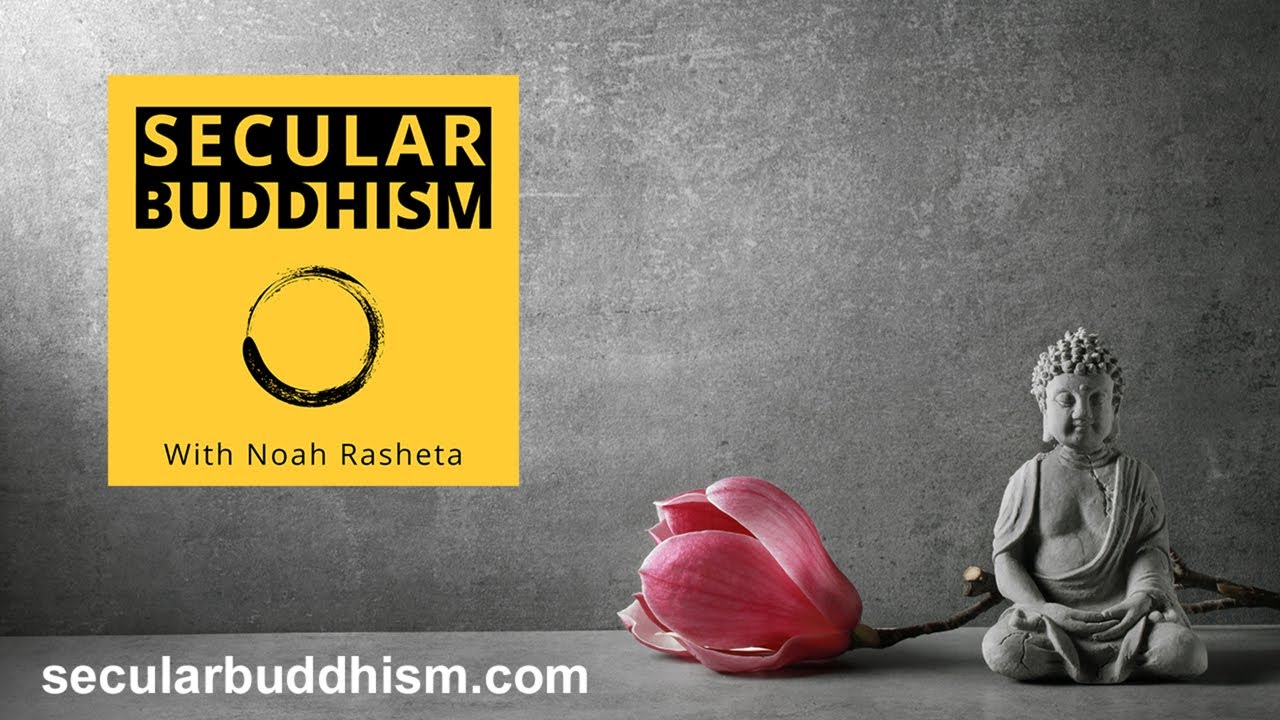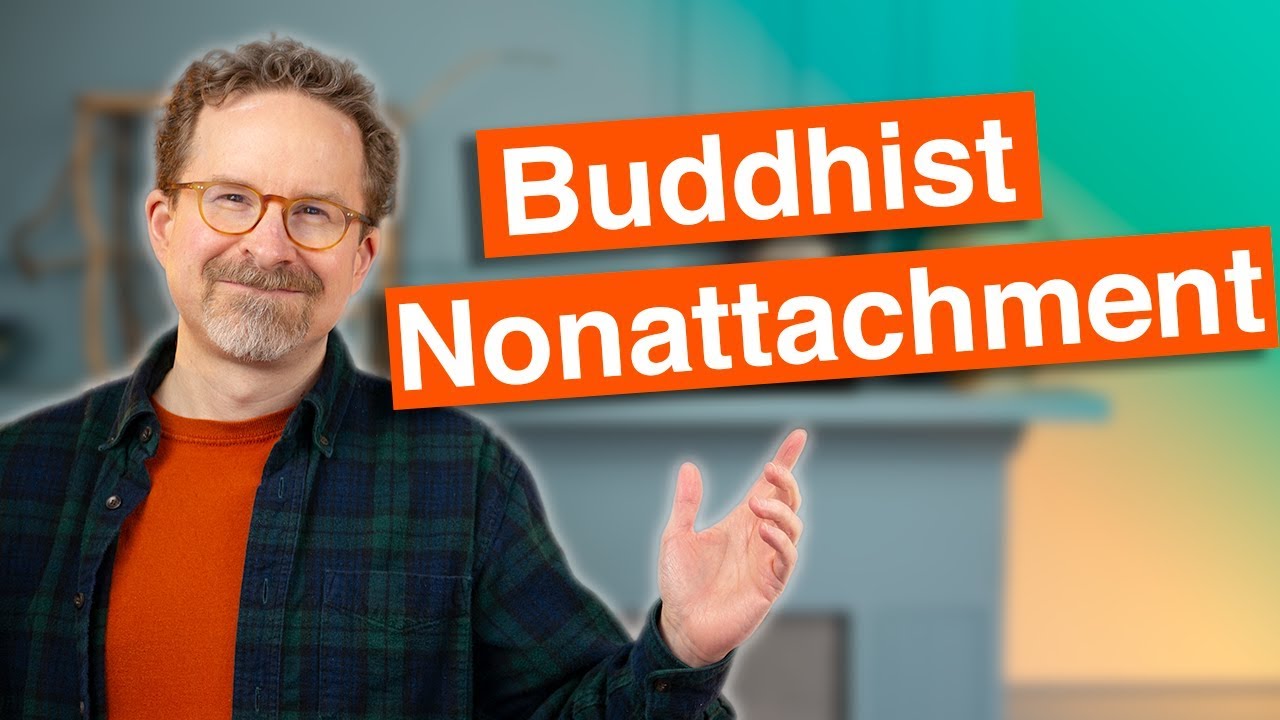Non-Attachment - What It Is And How To Do It
Non-attachment seems implausible in light of all the things we cherish in our lives, doesn't it? However, a lot of people equate emotional detachment, coldness, and lack of care with non-attachment. True non-attachment, however, is the exact opposite.
Author:Suleman ShahReviewer:Han JuJul 18, 202323.2K Shares516.2K Views

Non-attachmentseems implausible in light of all the things we cherish in our lives, doesn't it?
However, a lot of people equate emotional detachment, coldness, and lack of care with non-attachment.
True non-attachment, however, is the exact opposite.
Because we are not addicted to thoughts, objects, or other people, it enables us to live a lifeof enjoyment and freedom.
We all want to be happy and not have to go through pain, but we often get attached to people, places, or things that aren't good for us.
Being attached makes us more prone to experiencing pain when things don't go as planned and prevents us from fully experiencing the joy of the current moment.
Here are some pointers on how to practice non-attachment if you're prepared to let go of your attachments.
What Is Non-Attachment?
Non-attachment is simply the absence of attachment to things, people, or results.
It just means that you don't let them determine how happy you are; it doesn't suggest that you don't care about things or people.
Additionally, being non-attached does not preclude developing emotional ties to people or things or maintaining a connection to the outside world.
Instead, the focus should be on making a positive connection with both attachment and separation.
The objective is to walk through life with an open heart and avoid letting your attachments define who you are.
Non-attachment is, in essence, the act of letting go.
All of us have attachments to ideas, feelings, and objects.
But when we get overly connected, it can cause pain.
For instance, you can be emotionally invested in the prospect of advancing professionally.
Although you worked hard and gave it your all, you can still feel upset if you don't get the promotion.
This is a result of your dependence on factors beyond your control for happiness.
We simply let our lives happen, concentrating on the here and now, without attachment to any particular result.

27 - Understanding Non-Attachment
What Are The Types Of Attachment?
Material
We might become the owners of the things we own.
It's a regular cycle: we purchase items, they make us happy, and then we feel the need to purchase further items to keep ourselves happy.
But ultimately, we get to a point when we have too much stuff, and we start to own it instead of possessing it.
We can become slaves to our things, which can breed envy, avarice, and an endless cycle of consumption.
Emotional
In many aspects, emotional attachment is good and is frequently thought of as such.
After all, it is via our emotions that we are able to connect with othersand build lasting relationships.
However, emotional connection can also result in jealousy, possessiveness, and a dread of being abandoned.
When someone is emotionally attached to another person, they may feel compelled to be constantly present.
They might also think they are essential to their existence.
In certain relationships, this kind of attachment can be helpful, but it can also be harmful.
Thought
Thoughts are but thoughts, and unless we choose to believe them, they cannot harm us.
But a lot of us get mired in our ideas and let them run our lives.
Dwelling on the past or worrying about the future can cause anxiety, sadness, and other mental healthproblems.
We can achieve freedom and peace when we're able to let go of our attachment to our thoughts.
How To Practice Non-Attachment
You probably have a strong desire to control things, just like the majority of people.
Naturally, you want to be in charge of your own destiny, but you also want to have influence over the people and circumstances in your environment.
Sadly, this urge to exert control frequently results in frustration, stress, and even conflict.
The good newsis that one can learn to embrace non-attachment rather than attachment by letting go of the need to control.
You can start practicing non-attachment in your own life by following these five simple steps:
Identify Your Attachments
Recognizing your attachments is the first step in developing non-attachment.
What are the things that you feel you cannot live without?
These can include things like money, connections, or even ideals or convictions.
Once you've determined what your attachments are, carefully inspect them.
Do they really contribute as much to your happiness as you think?
Or, could you let them go without too much suffering?
Continue looking for the advantages of detachment.
For instance, realize, that detachments will enable you to live more simply and with less stress if you are attached to worldly items.
If you are emotionally attached to someone, you should understand that letting go will help you have a more harmonious relationship and will free you up to enjoy other people and activities.
You must accept the fact that all of your relationships are really transitory if you ever want to let go.
The idea of connection is a false one because nothing in this life is everlasting.
You can learn to discover true serenity and happiness by engaging in non-attachment practices.
Look For Fulfillment From Within
Being emotionally detached from the people and things in your life is not the aim of non-attachment.
Find your sense of fulfillment yourself rather than through outside influences.
Although it may be challenging, the effort will be well worth it.
By concentrating on your inner improvement, you might find fulfillment from the inside.
Spend some time each day broadening your horizons and learning new things.
Even when the outward conditions are not ideal, doing this will make you feel more secure and content with your life.

What is Buddhist Nonattachment?
Practice Moderation
It's critical to strike a healthy balance when you attempt to distance yourself from your material possessions.
You don't want to be so cut off from life that you stop appreciating the beautiful things in it. Rather, strive for moderation.
Don't let your things own you; rather, appreciate the beauty and comfort they bring you.
You need to practice detachment more if you find yourself fixating on a certain thing or getting upset when you can't have it.
To be content with what you have rather than continuously wanting more is the aim, keep that in mind.
You can lead a more tranquil and satisfying life by finding a healthy balance between connection and separation.
Allow Your Feelings, Thoughts, And Emotions To Flow
Learning to let go of thoughts, feelings, and emotions is among the most difficult aspects of detachment.
These things frequently make little sense and are continuously changing.
However, if we attempt to cling to them, all we do is harm ourselves.
Don't pass judgment on your ideas, feelings, or emotions; just let them come and go.
Avoid attempting to fend them off or push them away.
Just keep an eye on them, and then let them go.
Although getting acclimated to this could take some time, it's important to be patient with yourself.
Focus On The Present Moment
Learning to concentrate on the present moment is the last step in developing non-attachment.
We frequently reside in the past or the future when we become connected to certain people, things, or results.
We can worry about what might occur in the future or ruminate on a past injury.
However, by focusing on the here and now, we can let go of our attachment to the past and the future and just be in the present.
This implies that we let go of our attachment to how things should be and instead appreciate what is, even while we still make plans for the future and draw lessons from the past.
When we are able to do this, we are liberated from the burden of our attachments and can live more fully in each moment.
What Are The Benefits Of Non-Attachment?
We suffer when we are connected to stuff.
This is so because attachment is predicated on the myth that our satisfaction is found elsewhere.
We can start to let go of this untrue idea and discover actual satisfaction within ourselves by engaging in non-attachment practices.
Additionally, there are a ton of advantages to practicing non-attachment, including:
- Detachment from the things that bring about misery will make you happier.
- Because you're letting things happen rather than trying to influence them, you'll feel less worried.
- By not being overly dependent or clingy, you'll have stronger connections.
- You'll take back control of your life and stop allowing your thoughts, feelings, and material possessions to rule you.
- Due to the fact that you won't be seeking things that you believe will make you happy, you'll experience greater contentment and fulfillment in life.
- You'll be more aware and in the moment because you won't be thinking about the past or worrying about the future all the time.
- Realizing that worldly possessions don't provide long-lasting satisfaction will make you less materialistic.
- Because you won't be judging people or yourself based on your attachments, you'll have greater compassion for yourself and others.
- Since you will understand that other people's behaviors aren't always about you, you won't take things personally.
- You won't harbor resentments or grudges since you'll be able to let them go more quickly.
Why Self-Care Is Important When Practicing Non-Attachment
It is crucial to look after yourself first in order to live a life of non-attachment.
This entails developing a strong feeling of self-worth and mastering the art of self-soothing.
When we are able to take care of our own needs, we are less inclined to turn to others for assistance.
When we no longer believe that the things we are tied to are essential to our pleasure, we may start to let go of them.
This does not imply that all attachments are harmful, though.
Only when our attachments deteriorate may they start to negatively impact our lives.
Finding a balance between taking care of ourselves and letting go of the things that are no longer useful to us is therefore crucial.
People Also Ask
How Can I Practice Non-Attachment?
Establish clear boundaries with your family and friends so that you can spend time alone as well as with them in order to develop non-attachment.
Additionally, to protect some level of privacy, keep some crucial things to yourself, such as the passwords to your phone or social media accounts.
What Is Practicing Non-Attachment?
Parenting with non-attachment means attending to your child's needs without expecting anything in return.
Given their current degree of maturity, you let them venture out into the world as far as they can safely do so.
You instruct them without expecting them to share your entire worldview.
What Is Non-Attachment In Buddhism?
The Buddhist concept of nonattachment refers to an open engagement with reality without emphasis on obtaining predetermined results.
The goal of this study was to find, create, and test a brand-new measure of non-attachment related to self-concepts.
What Is The Difference Between Detachment And Non-Attachment?
According to Goldstein, non-attachment is the state of not clinging to everything that occurs in life, including experiences, events, or thoughts.
Detachment, on the other hand, entails pulling away from something.
Conclusion
The technique of non-attachment is one that is not only difficult but also very vital.
We can be happier and feel more at peace with ourselves if we learn to emotionally separate ourselves from the things we own.
Remember to seek contentment from sources within yourself, exercise moderation, let your thoughts and emotions come and go, and keep your attention on the here and now if you suffer with attachment.
These are all important things to keep in mind.
With enough time and effort, you can develop the ability to let go and so lead a life that is more tranquil and meaningful.

Suleman Shah
Author
Suleman Shah is a researcher and freelance writer. As a researcher, he has worked with MNS University of Agriculture, Multan (Pakistan) and Texas A & M University (USA). He regularly writes science articles and blogs for science news website immersse.com and open access publishers OA Publishing London and Scientific Times. He loves to keep himself updated on scientific developments and convert these developments into everyday language to update the readers about the developments in the scientific era. His primary research focus is Plant sciences, and he contributed to this field by publishing his research in scientific journals and presenting his work at many Conferences.
Shah graduated from the University of Agriculture Faisalabad (Pakistan) and started his professional carrier with Jaffer Agro Services and later with the Agriculture Department of the Government of Pakistan. His research interest compelled and attracted him to proceed with his carrier in Plant sciences research. So, he started his Ph.D. in Soil Science at MNS University of Agriculture Multan (Pakistan). Later, he started working as a visiting scholar with Texas A&M University (USA).
Shah’s experience with big Open Excess publishers like Springers, Frontiers, MDPI, etc., testified to his belief in Open Access as a barrier-removing mechanism between researchers and the readers of their research. Shah believes that Open Access is revolutionizing the publication process and benefitting research in all fields.

Han Ju
Reviewer
Hello! I'm Han Ju, the heart behind World Wide Journals. My life is a unique tapestry woven from the threads of news, spirituality, and science, enriched by melodies from my guitar. Raised amidst tales of the ancient and the arcane, I developed a keen eye for the stories that truly matter. Through my work, I seek to bridge the seen with the unseen, marrying the rigor of science with the depth of spirituality.
Each article at World Wide Journals is a piece of this ongoing quest, blending analysis with personal reflection. Whether exploring quantum frontiers or strumming chords under the stars, my aim is to inspire and provoke thought, inviting you into a world where every discovery is a note in the grand symphony of existence.
Welcome aboard this journey of insight and exploration, where curiosity leads and music guides.
Latest Articles
Popular Articles
